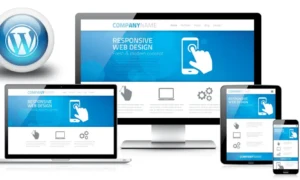In the rapidly evolving world of software development, the need for speed has become a central theme. Businesses constantly seek to launch new products and feature swiftly, while developers aim to optimize their workflows to deliver high-quality software in less time. Various proven techniques have emerged to address these demands that can significantly expedite the software development process without compromising quality. This comprehensive article will explore these techniques, exploring how they can revolutionize how software is conceptualized, built, and released.
Introduction
The traditional linear approach to fast-track software development, where each step follows the next in a predefined sequence, no longer aligns with the modern pace of innovation. Software development has transformed into a dynamic process that requires agility, collaboration, and a commitment to continuous improvement.
Agile Methodology: Breaking Down Barriers
Agile methodology has emerged as a response to software development’s need for flexibility and adaptability. It emphasizes iterative progress and values customer feedback. Cross-functional teams work closely together, breaking down silos and fostering a shared sense of ownership over the project.
Continuous Integration and Continuous Deployment (CI/CD)
The CI/CD pipeline automates the integration, testing, and deployment of code changes. By automating these processes, development teams can detect and rectify issues earlier in the development cycle, leading to shorter feedback loops and faster release cycles.
Microservices Architecture: Modular Development
Microservices architecture encourages the development of an application as a collection of loosely coupled services. Each service is responsible for specific functionality and can be developed, deployed, and scaled independently. This modular approach accelerates development by allowing teams to focus on individual components without being hampered by the intricacies of the entire application.
Prioritize MVP Development
The Minimum Viable Product (MVP) concept has gained prominence as a strategy to expedite development. By identifying the core features necessary for an initial release, development teams can deliver a functional product quickly. Subsequent iterations are informed by user feedback, ensuring that the product evolves to meet actual user needs.
Automated Testing: Ensuring Reliability
Automated testing tools have become a cornerstone of modern software development. They enable developers to run tests on their code quickly and consistently, ensuring that new features or changes do not introduce regressions or errors. This systematic approach to testing enhances software reliability without adding substantial time overhead.
Parallel Development Tracks
Rather than a linear development process, teams can adopt a parallel development approach. Different teams or team members work on separate features or modules simultaneously. This approach minimizes bottlenecks and fully exploits the team’s collective skills and expertise.
DevOps Culture: Collaboration and Communication
DevOps bridges the gap between development and operations teams by fostering a culture of collaboration and shared responsibility. This approach leads to faster deployment, improved stability, and reduced lead times between feature development and release.
Effective Time and Resource Management
Efficiency in software development hinges on effective time and resource management. Techniques like time blocking help developers allocate focused time to specific tasks, while agile methodologies like Scrum provide a framework for iterative development and planning.
Leverage Open Source Solutions
The open-source ecosystem offers many pre-built solutions, libraries, and frameworks that can significantly accelerate development. Leveraging open source speeds up coding and ensures that best practices are incorporated.
Cloud Computing: Scalability and Flexibility
Cloud computing provides on-demand access to scalable and flexible infrastructure. Developers can spin up resources as needed, reducing the time spent setting up and configuring environments. This elasticity is particularly valuable for handling fluctuations in workload.
Version Control: Efficient Tracking
Version control systems, with Git being a prominent example, enable developers to track changes to their codebase over time. This not only facilitates collaboration but also empowers developers to experiment and innovate with the safety net of being able to revert to previous versions.
User-Centric Approach: Feedback Integration
User feedback is invaluable for shaping software development efforts. By incorporating user insights throughout the development process, teams can align their work with user needs, creating a product that satisfies the target audience better.
Rapid Prototyping for Clarity
Rapid prototyping involves creating lightweight, functional models of features or interfaces. These prototypes provide stakeholders with a tangible representation of the intended functionality, helping to clarify requirements and expectations early in the development cycle.
Conclusion
Fast-tracking software development is an intricate process that requires a combination of methodologies, tools, and cultural shifts. By embracing agile methodologies, automated testing, modular architectures, and collaborative DevOps practices, development teams can bring innovative software to market faster and more confidently.
FAQs
Q: How does the Agile methodology handle changing requirements?
A: Agile embraces change by promoting iterative development and frequent feedback loops, allowing teams to adapt to changing requirements without derailing the entire project.
Q: Can automated testing replace manual testing entirely?
A: While automated testing is efficient for certain tests, manual testing remains valuable for exploratory testing and assessing user experience.
Q: How does cloud computing enhance software development beyond scalability?
A: Cloud computing offers services like managed databases, analytics, and AI, allowing developers to focus on building features rather than managing infrastructure.
Q: How do microservices enhance the resilience of applications?
A: Microservices reduce the blast radius of failures. If one service fails, the rest of the application can continue functioning, improving overall application resilience.
Q: What role does version control play in collaborative development?
A: Version control systems enable multiple developers to work on the same codebase simultaneously while maintaining a clear history of changes and facilitating seamless collaboration.





























